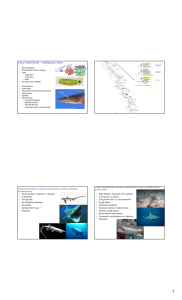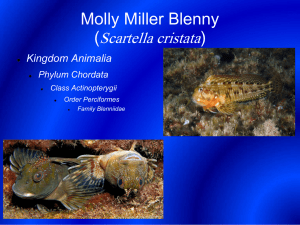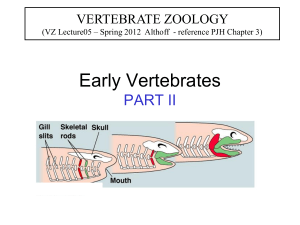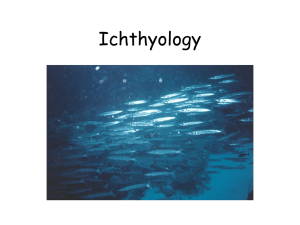Philip Bick Rajiformes (Latin raja
advertisement
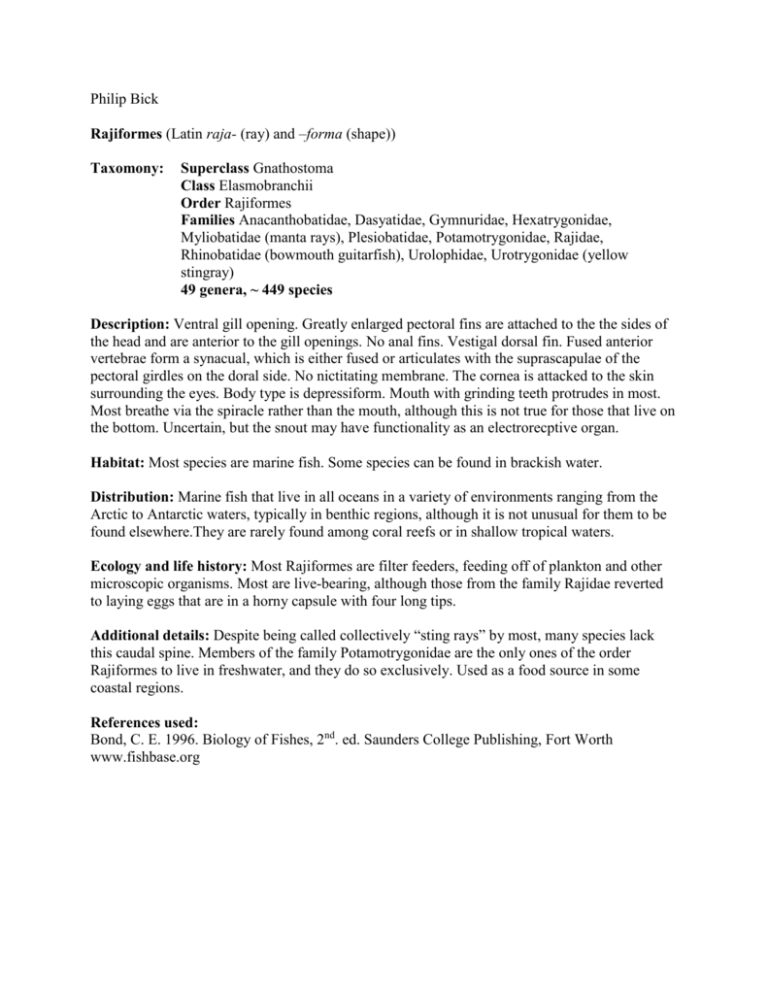
Philip Bick Rajiformes (Latin raja- (ray) and –forma (shape)) Taxomony: Superclass Gnathostoma Class Elasmobranchii Order Rajiformes Families Anacanthobatidae, Dasyatidae, Gymnuridae, Hexatrygonidae, Myliobatidae (manta rays), Plesiobatidae, Potamotrygonidae, Rajidae, Rhinobatidae (bowmouth guitarfish), Urolophidae, Urotrygonidae (yellow stingray) 49 genera, ~ 449 species Description: Ventral gill opening. Greatly enlarged pectoral fins are attached to the the sides of the head and are anterior to the gill openings. No anal fins. Vestigal dorsal fin. Fused anterior vertebrae form a synacual, which is either fused or articulates with the suprascapulae of the pectoral girdles on the doral side. No nictitating membrane. The cornea is attacked to the skin surrounding the eyes. Body type is depressiform. Mouth with grinding teeth protrudes in most. Most breathe via the spiracle rather than the mouth, although this is not true for those that live on the bottom. Uncertain, but the snout may have functionality as an electrorecptive organ. Habitat: Most species are marine fish. Some species can be found in brackish water. Distribution: Marine fish that live in all oceans in a variety of environments ranging from the Arctic to Antarctic waters, typically in benthic regions, although it is not unusual for them to be found elsewhere.They are rarely found among coral reefs or in shallow tropical waters. Ecology and life history: Most Rajiformes are filter feeders, feeding off of plankton and other microscopic organisms. Most are live-bearing, although those from the family Rajidae reverted to laying eggs that are in a horny capsule with four long tips. Additional details: Despite being called collectively “sting rays” by most, many species lack this caudal spine. Members of the family Potamotrygonidae are the only ones of the order Rajiformes to live in freshwater, and they do so exclusively. Used as a food source in some coastal regions. References used: Bond, C. E. 1996. Biology of Fishes, 2nd. ed. Saunders College Publishing, Fort Worth www.fishbase.org

